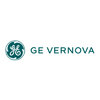Filter interviews by
Param Renewable Energy Interview Questions and Answers
28 Interview questions
Common defects in solar PV modules during operation include performance issues, physical damage, and electrical failures.
Delamination: Separation of layers in the module, leading to reduced efficiency.
Hot spots: Overheating in specific areas due to shading or manufacturing defects, causing potential damage.
Micro-cracks: Small fractures in the solar cells that can lead to performance degradation over time.
Corrosion...
Inverters convert DC electricity from solar panels into AC electricity for home use.
Inverters are essential for solar power systems to convert direct current (DC) to alternating current (AC).
They ensure that the electricity generated by solar panels can be used by household appliances.
There are different types of inverters: string inverters, microinverters, and power optimizers.
String inverters connect multiple so...
Solar Power Plant SLD (Single Line Diagram) illustrates the electrical connections and components in a solar power system.
SLD provides a simplified representation of the electrical system, showing how components are interconnected.
It includes key elements like solar panels, inverters, transformers, and grid connections.
For example, an SLD might show how multiple solar arrays connect to a central inverter.
SLDs are ...
CT (Current Transformer) measures current, while PT (Potential Transformer) measures voltage in electrical systems.
CT is used to step down high current to a lower value for measurement.
PT is used to step down high voltage to a lower value for measurement.
Example of CT: Used in power plants to monitor current flow.
Example of PT: Used in substations to monitor voltage levels.
CTs are typically used in low-voltage app...
A transformer is an electrical device that transfers electrical energy between circuits through electromagnetic induction.
Consists of primary and secondary coils (windings) around a magnetic core.
Works on the principle of electromagnetic induction.
Used to step up (increase) or step down (decrease) voltage levels.
Example: Power transformers in electrical substations.
Example: Isolation transformers for safety in sen...
Maintenance ensures equipment, machinery, or systems are kept in good working condition to prevent breakdowns and ensure optimal performance.
Prevent breakdowns and extend equipment lifespan
Ensure optimal performance and efficiency
Reduce safety risks and downtime
Save costs in the long run by avoiding major repairs or replacements
A solar inverter is a device that converts the DC electricity generated by solar panels into AC electricity for use in homes and businesses.
Converts DC electricity from solar panels to AC electricity
Allows for use of solar energy in homes and businesses
Helps manage and optimize solar power production
Examples: SMA Solar Inverters, Enphase Microinverters
Protection of power transformer involves implementing measures to prevent damage or failure of the transformer due to various factors.
Protection relays are used to detect abnormal conditions and isolate the transformer from the system.
Overcurrent protection is used to prevent damage from excessive current flow.
Differential protection compares the current entering and leaving the transformer to detect internal faul...
Cuf indicates the cubic feet of a material or space.
Cuf is an abbreviation for cubic feet.
It is commonly used in construction and engineering to measure volume.
For example, when ordering concrete for a project, the quantity may be specified in cuf.
PA indicates Public Address.
PA system is used for making announcements or addressing a large group of people.
It is commonly used in public spaces like airports, train stations, and stadiums.
PA systems can also be used in schools, offices, and other institutions for communication purposes.
Param Renewable Energy Interview Experiences
18 interviews found
I applied via Company Website and was interviewed in Aug 2024. There was 1 interview round.
(5 Questions)
- Q1. What is solar inverter
- Ans.
A solar inverter is a device that converts the DC electricity generated by solar panels into AC electricity for use in homes and businesses.
Converts DC electricity from solar panels to AC electricity
Allows for use of solar energy in homes and businesses
Helps manage and optimize solar power production
Examples: SMA Solar Inverters, Enphase Microinverters
- Q2. What is purpose of maintenance
- Ans.
Maintenance ensures equipment, machinery, or systems are kept in good working condition to prevent breakdowns and ensure optimal performance.
Prevent breakdowns and extend equipment lifespan
Ensure optimal performance and efficiency
Reduce safety risks and downtime
Save costs in the long run by avoiding major repairs or replacements
- Q3. What is protection of power transformer
- Ans.
Protection of power transformer involves implementing measures to prevent damage or failure of the transformer due to various factors.
Protection relays are used to detect abnormal conditions and isolate the transformer from the system.
Overcurrent protection is used to prevent damage from excessive current flow.
Differential protection compares the current entering and leaving the transformer to detect internal faults.
Te...
- Q4. Types of relay and it's functions
- Ans.
Relays are devices that act as switches to control electrical circuits. They come in various types with different functions.
Electromechanical relays: use electromagnets to mechanically operate the switch
Solid-state relays: use semiconductor devices to switch the circuit on and off
Time delay relays: introduce a time delay before switching the circuit
Overload relays: protect electrical circuits from overloads by disconne...
- Q5. Types of transformer testing
- Ans.
Transformer testing includes routine tests, type tests, and special tests to ensure proper functioning and safety.
Routine tests: include insulation resistance, turns ratio, winding resistance, and polarity tests.
Type tests: include temperature rise, short-circuit withstand, impulse voltage, and dielectric tests.
Special tests: include noise level, partial discharge, and harmonics tests.
Testing is crucial to ensure trans...
I applied via Naukri.com and was interviewed in May 2024. There were 2 interview rounds.
(3 Questions)
- Q1. What is PR indicate?
- Ans.
PR indicates Project Report in the context of construction and engineering projects.
PR stands for Project Report, which is a detailed document outlining the progress, status, and key information about a specific project.
Project Reports are essential for tracking project milestones, budget, resources, and overall performance.
They often include information on project scope, objectives, timelines, risks, and mitigation st...
- Q2. What is cuf indicate?
- Ans.
Cuf indicates the cubic feet of a material or space.
Cuf is an abbreviation for cubic feet.
It is commonly used in construction and engineering to measure volume.
For example, when ordering concrete for a project, the quantity may be specified in cuf.
- Q3. What is PA indicate?
- Ans.
PA indicates Public Address.
PA system is used for making announcements or addressing a large group of people.
It is commonly used in public spaces like airports, train stations, and stadiums.
PA systems can also be used in schools, offices, and other institutions for communication purposes.
(2 Questions)
- Q1. Why ae you join our organization
- Q2. What reason for change
- Q1. About Target and achievements
- Q2. About project planning
I appeared for an interview in Oct 2024, where I was asked the following questions.
- Q1. WTG related Mechanical Question
- Q2. Like Major Breakdown Work,DGR etc...

(4 Questions)
- Q1. Basic questions
- Q2. What is different between DFIG &non-DFIG.
- Ans.
DFIG stands for Doubly Fed Induction Generator, while non-DFIG refers to generators that do not have this feature.
DFIG has two sets of windings - one connected to the grid and the other to a converter, allowing for variable speed operation.
Non-DFIG generators do not have this dual winding feature and typically operate at fixed speeds.
DFIG systems are more flexible and efficient in capturing wind energy compared to non-...
- Q3. How many PCH card in our WTG
- Ans.
There are typically 2 PCH cards in a wind turbine generator (WTG).
Most WTGs have 2 PCH cards for redundancy and reliability.
PCH cards are responsible for monitoring and controlling various aspects of the turbine.
Having 2 PCH cards allows for one to take over in case of failure in the other.
- Q4. What is IGBT & operation function
- Ans.
IGBT stands for Insulated Gate Bipolar Transistor, a semiconductor device used for switching power in electronic devices.
IGBT is a type of power semiconductor device that combines the high efficiency of a MOSFET with the high current and low saturation voltage capability of a bipolar transistor.
It is commonly used in applications such as motor drives, inverters, and power supplies.
IGBT operates by controlling the volta...
(1 Question)
- Q1. Question related WTG
(4 Questions)
- Q1. Electrical engineering
- Q2. Electrical questions
- Q3. Electrical questions and answers
- Q4. Solar system and
Interview Preparation Tips
I applied via Naukri.com and was interviewed in Dec 2023. There were 2 interview rounds.
(2 Questions)
- Q1. What is PR Indicate ?
- Ans.
PR Indicate stands for Permanent Reference Indicate. It is a benchmark point used for measurements and alignments in construction projects.
PR Indicate is a fixed point of reference used by site engineers for accurate measurements and alignments.
It is typically a permanent fixture on the site, such as a benchmark or a known point on a building.
PR Indicate helps ensure consistency and accuracy in construction work.
For ex...
- Q2. What is CUF ?
- Ans.
CUF stands for Coefficient of Utilization Factor, which is a measure of the efficiency of a lighting system in distributing light to a given area.
CUF is used in lighting design to determine how effectively a lighting fixture illuminates a space.
It is calculated by dividing the illuminance at a specific point on a work plane by the illuminance directly below the fixture.
A higher CUF indicates better light distribution a...
(2 Questions)
- Q1. Why are look for change ?
- Ans. For better opportunity and future growth
- Q2. Why do join our organization ?
Interview Preparation Tips
(2 Questions)
- Q1. What is PR and cuf ?
- Ans.
PR stands for Public Relations and CUF stands for Cubic Feet.
PR in engineering can also stand for Permanent Resident, but in this context it likely refers to Public Relations.
CUF is a unit of measurement for volume, commonly used in construction and engineering.
PR is important for maintaining good relationships with clients and stakeholders.
CUF is used to measure the volume of materials like concrete or soil on a const...
- Q2. PR performance ratio and capacity utilization factor
- Ans.
PR performance ratio and capacity utilization factor are key metrics used to assess the efficiency and effectiveness of a site engineer's work.
PR performance ratio measures the ratio of planned work to actual work completed, indicating how well the engineer is sticking to the project schedule.
Capacity utilization factor measures how efficiently resources are being used on a project, helping to identify areas for improv...
(2 Questions)
- Q1. Why do you change job
- Q2. For better opportunity
Interview Preparation Tips
I appeared for an interview before Apr 2024, where I was asked the following questions.
- Q1. Common faults occuring in Transformer
- Ans.
Transformers can experience various faults, impacting performance and reliability, including insulation failure and overheating.
Insulation Failure: Breakdown of insulation materials can lead to short circuits.
Overheating: Excessive heat can cause damage to windings and insulation.
Core Saturation: Can result in increased losses and overheating.
Electrical Faults: Short circuits or ground faults can disrupt operation.
Mech...
- Q2. List out some defects in solar PV modules encountered during o&m phas4
- Ans.
Common defects in solar PV modules during operation include performance issues, physical damage, and electrical failures.
Delamination: Separation of layers in the module, leading to reduced efficiency.
Hot spots: Overheating in specific areas due to shading or manufacturing defects, causing potential damage.
Micro-cracks: Small fractures in the solar cells that can lead to performance degradation over time.
Corrosion: Dam...
- Q3. Documents maintained at sites
- Ans.
Documents at sites ensure quality control, compliance, and effective communication in engineering projects.
Quality Assurance Plans: Outline procedures for maintaining quality standards.
Inspection Reports: Document findings from site inspections to ensure compliance.
Change Orders: Record modifications to project scope or specifications.
Test Results: Maintain records of material and product testing outcomes.
Meeting Minut...
I appeared for an interview before Apr 2024, where I was asked the following questions.
- Q1. Explain Solar Power Plant SLD
- Ans.
Solar Power Plant SLD (Single Line Diagram) illustrates the electrical connections and components in a solar power system.
SLD provides a simplified representation of the electrical system, showing how components are interconnected.
It includes key elements like solar panels, inverters, transformers, and grid connections.
For example, an SLD might show how multiple solar arrays connect to a central inverter.
SLDs are cruci...
- Q2. What is the working principle of Inverter
- Ans.
Inverters convert DC electricity from solar panels into AC electricity for home use.
Inverters are essential for solar power systems to convert direct current (DC) to alternating current (AC).
They ensure that the electricity generated by solar panels can be used by household appliances.
There are different types of inverters: string inverters, microinverters, and power optimizers.
String inverters connect multiple solar p...
- Q3. How do you increase the efficiency of solar plant
- Ans.
Enhancing solar plant efficiency involves optimizing design, technology, and maintenance practices.
Utilize high-efficiency solar panels, such as monocrystalline panels, which can convert more sunlight into electricity.
Implement tracking systems that adjust the angle of solar panels to follow the sun's path, increasing exposure.
Incorporate energy storage solutions, like batteries, to store excess energy generated during...
Top trending discussions






Param Renewable Energy Interview FAQs
The duration of Param Renewable Energy interview process can vary, but typically it takes about less than 2 weeks to complete.
Tell us how to improve this page.
Param Renewable Energy Interviews By Designations
- Param Renewable Energy Technician Interview Questions
- Param Renewable Energy Site Engineer Interview Questions
- Param Renewable Energy Senior Engineer Interview Questions
- Param Renewable Energy Electrical Engineer Interview Questions
- Param Renewable Energy Project Manager Interview Questions
- Param Renewable Energy Engineer Interview Questions
- Param Renewable Energy Engineer 1 Interview Questions
- Param Renewable Energy Senior Quality Engineer Interview Questions
- Show more
Interview Questions for Popular Designations
Overall Interview Experience Rating
based on 18 interview experiences
Difficulty level
Duration
Interview Questions from Similar Companies
Param Renewable Energy Reviews and Ratings
based on 174 reviews
Rating in categories
|
Engineer
79
salaries
| ₹2.4 L/yr - ₹5.6 L/yr |
|
Senior Engineer
45
salaries
| ₹3.6 L/yr - ₹7.9 L/yr |
|
Electrical Engineer
45
salaries
| ₹2.4 L/yr - ₹5 L/yr |
|
Junior Engineer
31
salaries
| ₹2 L/yr - ₹5 L/yr |
|
Senior Technician
19
salaries
| ₹2 L/yr - ₹4.3 L/yr |

Suzlon Group

Adani Power

Adani Group

NTPC
- Home >
- Interviews >
- Param Renewable Energy Interview Questions











